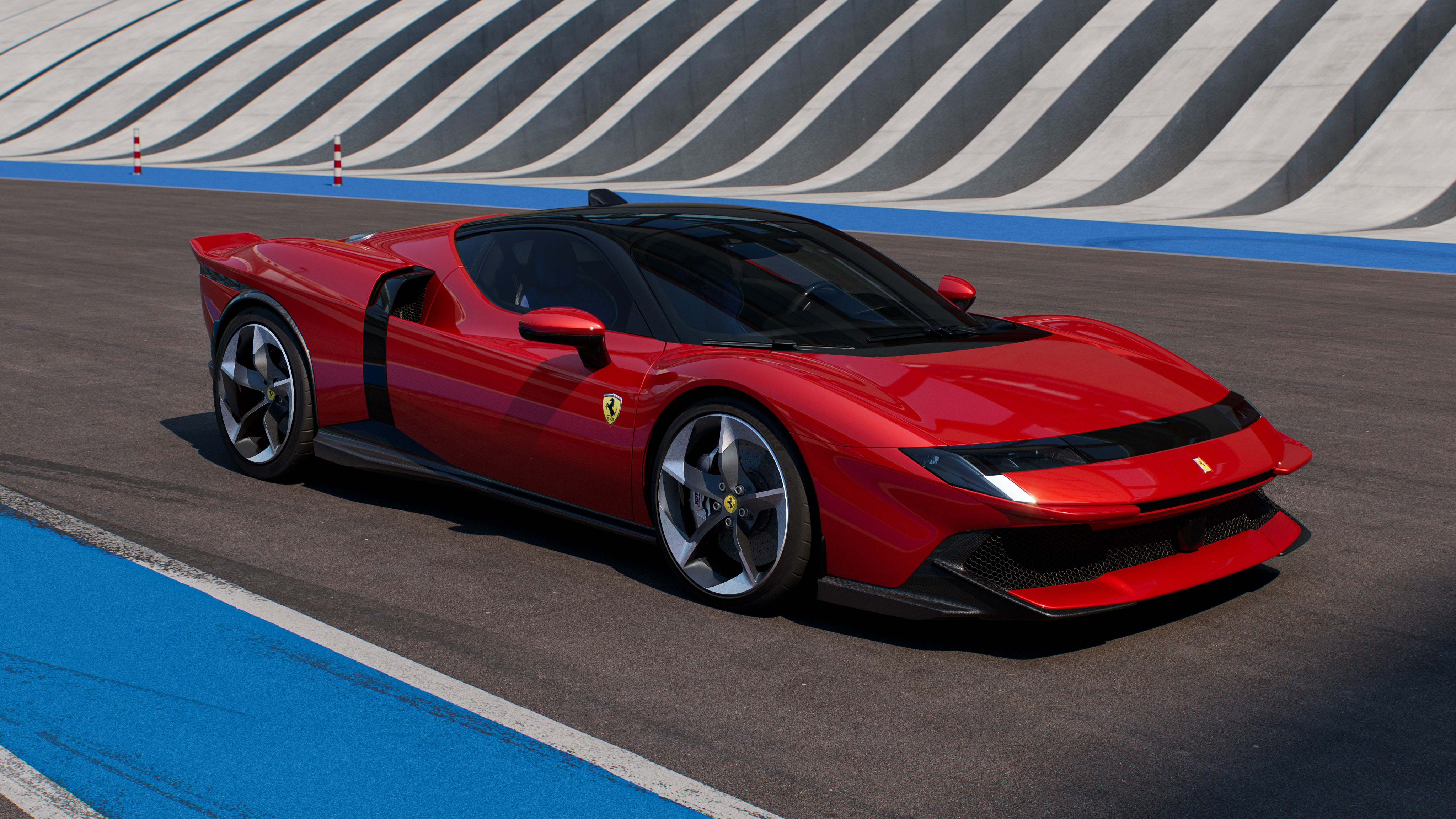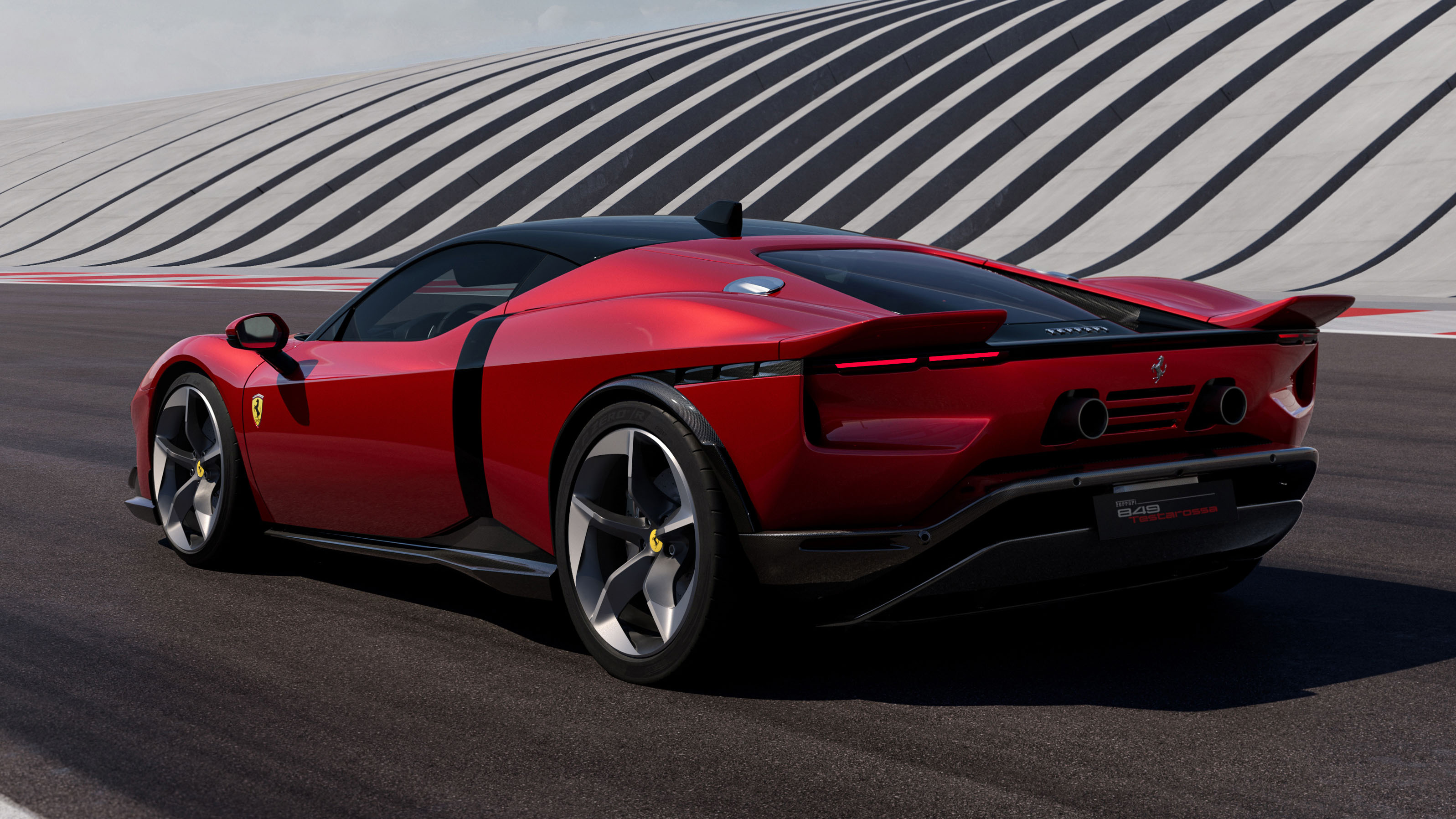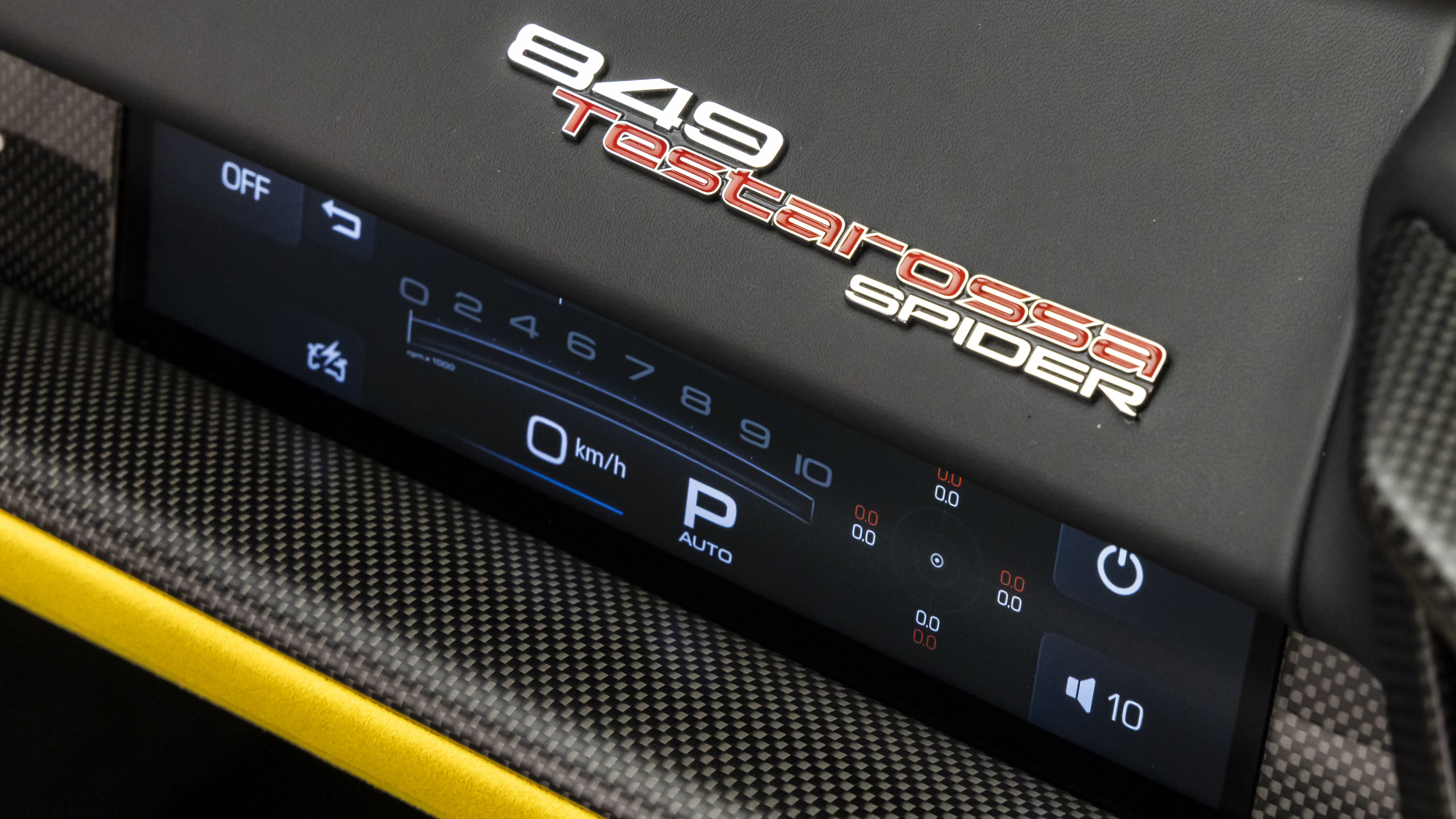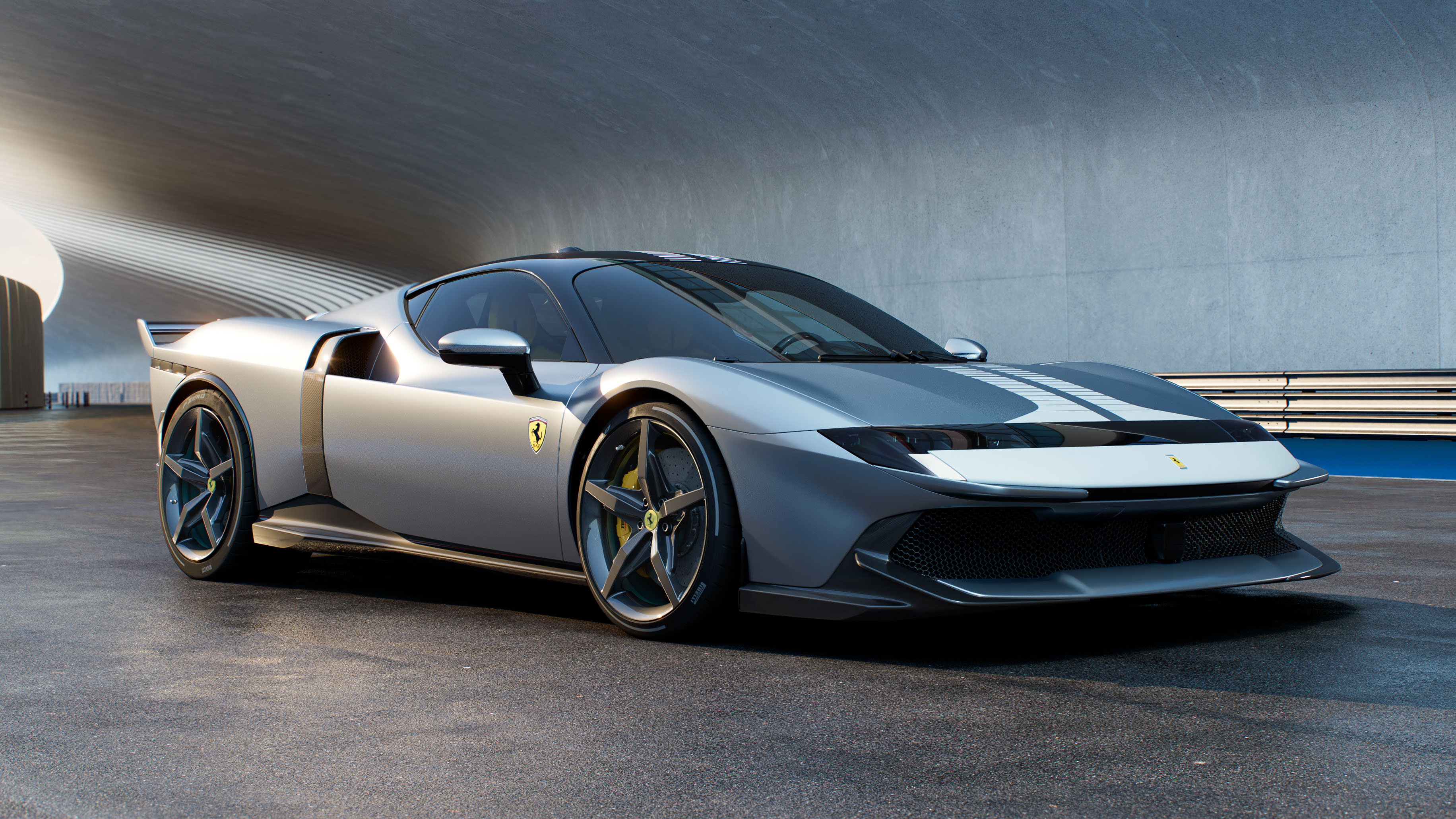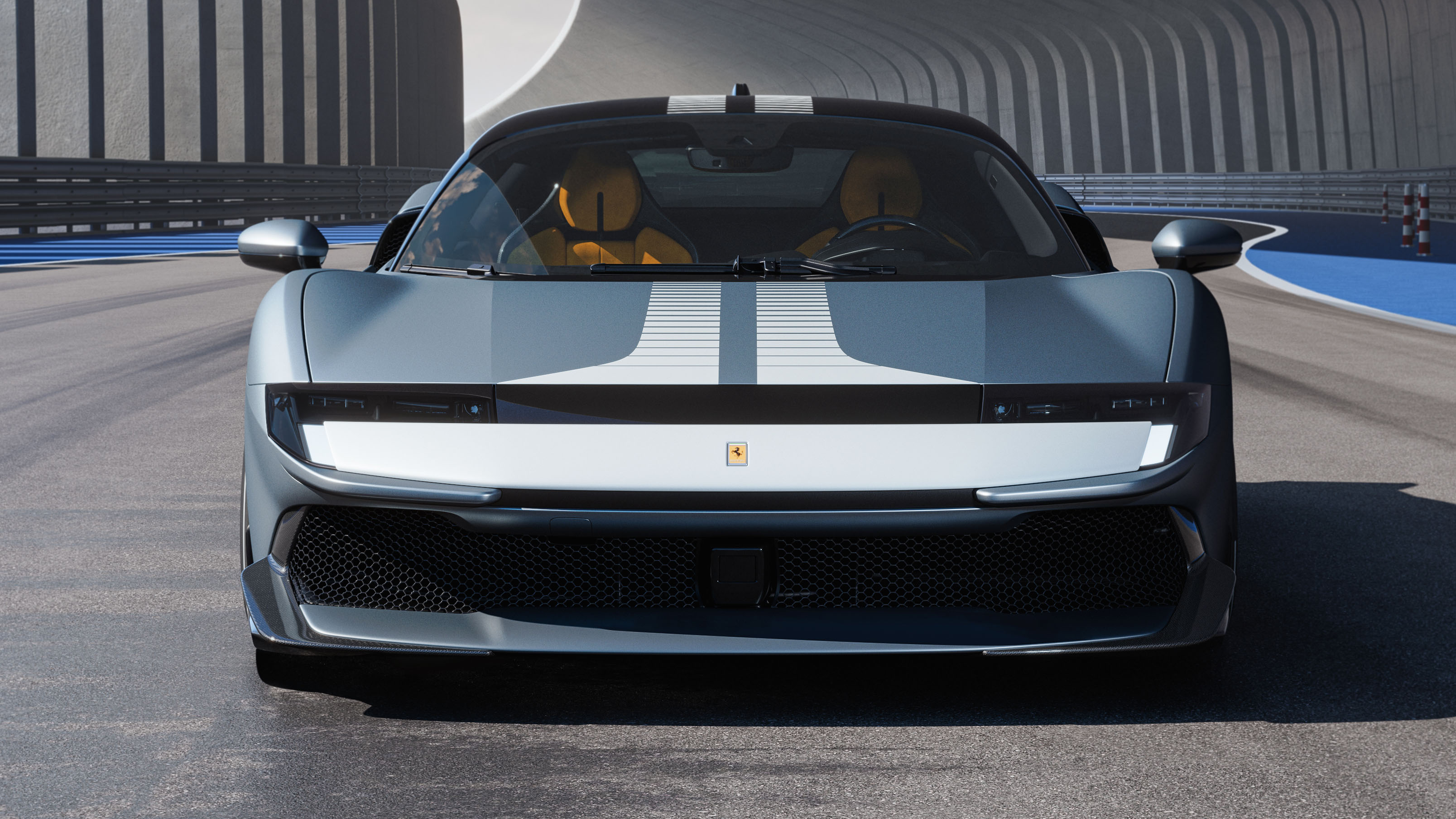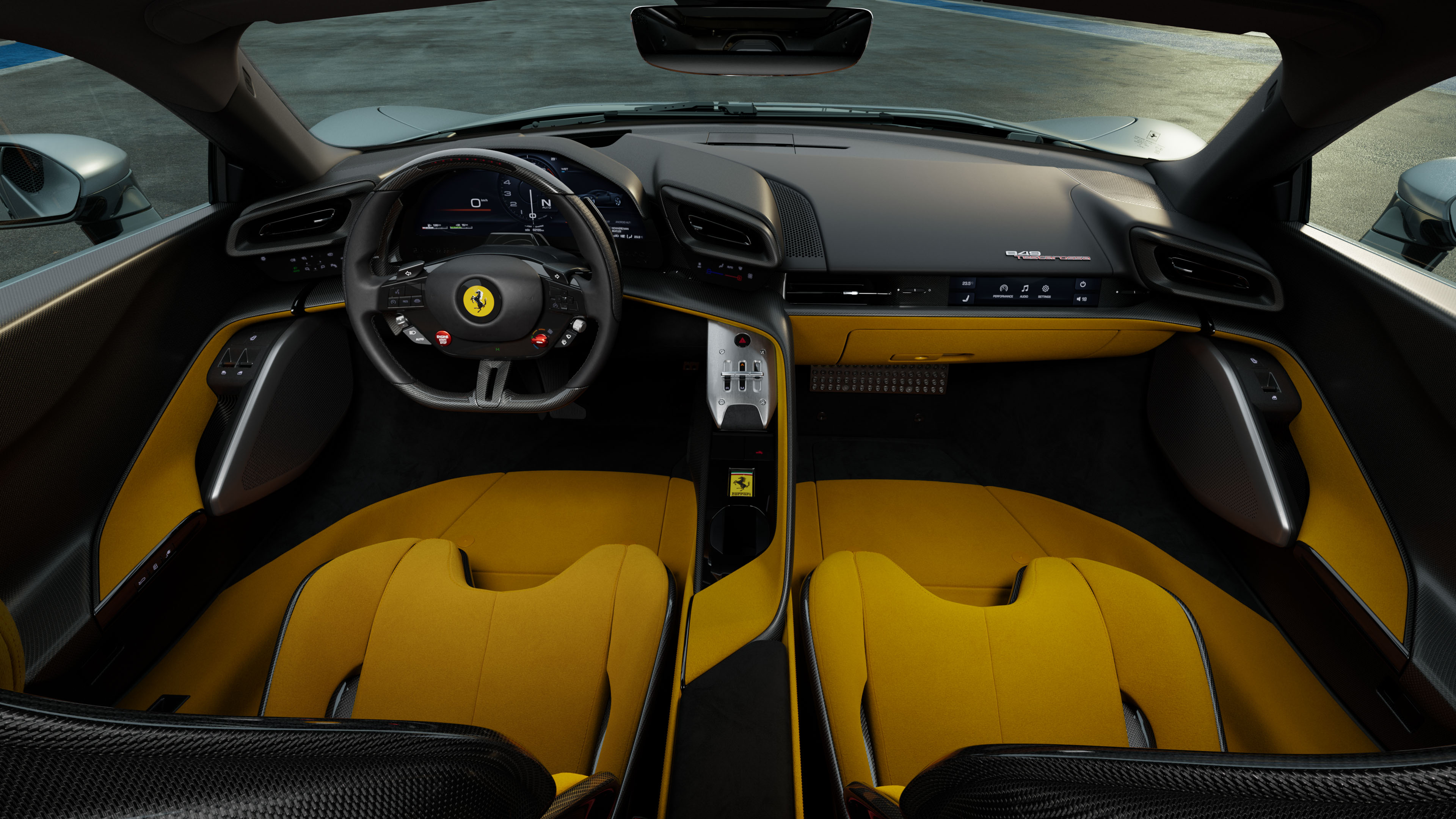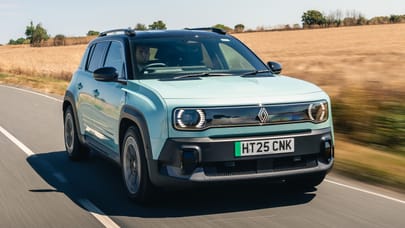
The new Ferrari 849 Testarossa is a 1,036bhp replacement for the SF90
The SF90 was a gamechanger. Can this Testarossa be a class leader in this new era of hybrid superware?
This is the Ferrari 849 Testarossa, replacement for the only-slightly sub-hypercar that is/was the Ferrari SF90. And it’s got quite a lot going on under that new skin, although one suspects that Ferrari’s relentless application of marginal gains is meant to distract from the fact that at its core, this is an SF90 Evo rather than a completely new thing. At least in terms of hardware.
Mainly because at its heart is the same 4.0-litre V8 with two turbos, supplemented by a trifecta of e-motors, one which offers support to the rear axle, the other two managing a front wheel each, giving both all-wheel drive and torque-vectoring capabilities as per the forebear. There’s some 50-odd horsepower more than before, all carved from the internal combustion engine - mainly because the electric horsepower is limited to the 217bhp possible from the wee lithium-ion 7.45kWh battery. Velocity curbed by the lack of available volts.
So there’s bigger turbos with low-friction bearings from the F80, chunkier intercoolers, new cylinder heads to go with the bigger blowers, a different block, intake plenums, valvetrain and fuel rail. Oh, and titanium fastenings and bits nicked from the 296 GT3 to make sure it actually doesn’t weigh any more than an SF90.
All that drives through the same eight-speed F1-style paddleshifted ‘box, although as ever it’s purportedly faster, better and more emotional than ever before, the car louder and more sonorous in all modes and especially on the overrun. Which sounds interesting both metaphorically and literally, but we need to drive it to make sure.
Still, the power uplift and lack of added heft means that it’s pretty quick: 0-62mph in 2.25 seconds, 0-124 in 6.3. That’s a bit of a neck-breaker by anyone’s standards. And it’ll go around corners, too. According to Ferrari it’s already posted a Fiorano laptime of 1m 17.5, meaning it’s about 1.5 seconds faster than the SF90 and only about a fifth of a second off the SF90 XX. Not too shabby.
And it looks good. Or terrible, according to some in the Top Gear office. Still, shades of F80, Daytona or even - in the ghost of Ferraris past - the 308. Bits of stylised racing car, volumes that speak of shape defined by aero. The front is double-tiered, featuring aero flicks that look like bumper overriders on the top section - divisive but interesting. The lower area widens the car visually, and there’s a tornado’s-worth of vortex generators under the front to play with the aero profile.
The black horizontal mask that includes the headlights gives it a contemporary and familial Ferrari feel, and the shapes and volumes seem to have a touch of the 1970s about them, without falling too harshly into pastiche or flat-out copying. It looks much more resolved in the metal, by the way, and smaller than you think. Or at least more comfortably-sized.
Then there’s the side profile that features a deep channel carved into the door top that serves the big openings aft of the windows. They’re the channels that feed those bigger intercoolers, necessary because if you make more power, you generate more heat. More heat means more cooling. Apparently the Testarossa requires 15 per cent more cooling than the SF90, and produces 25kg more downforce - 415kg at 155mph. Which is respectable rather than groundbreaking.
But the biggest news is probably the ‘twin-tail’ rear. Almost pontoon-like rear arches that feed into a pair of static winglets, technically part of the rear bumpers, believe it or not, themselves supplemented by an active central section which pops up when high(er) downforce is required. Twin Inconel exhausts sit below that central section, and there are Venturis and the usual skirted and vented bits that flush high-pressure from wheelarches and the underneath of the car. It’s a confident looking thing, and it’s definitely got much more attitude than the SF90, which tended to look a little underwhelming from some angles. Supercar mid.
It should be daily driveable too. You’d think well over 1,000bhp might be a little tricky, but you can ease around on pure electric motivation (25km of e-only range), or work through the usual modes from settled to scary. And you’ll have help: deep breath, this thing has Side Slip Control version 9.0, advanced traction control to go with the eDiff, SCM, FDE 2.0 EPS, ABS Evo and FIVE.
Top Gear
Newsletter
Thank you for subscribing to our newsletter. Look out for your regular round-up of news, reviews and offers in your inbox.
Get all the latest news, reviews and exclusives, direct to your inbox.
Now, FIVE is a really interesting bit, because it’s an estimation system that can model dynamic behaviour in real time - basically creating a digital twin of the car as it goes through a corner. It stands for Ferrari Integrated Vehicle Estimator, and it’s a serious bit of kit. Merge that with Ferrari’s ABS Evo system and you’ve got a car that can think and predict its own way through a curve and adjust to suit via the torque vectoring and ABS module. Apparently it all feels natural. We shall see. As with the SF90, over about 130mph, it becomes rear wheel drive only. But the overload of electronic help is probably the only way you can manage more than 1,000bhp in a roadcar that’s still even vaguely driveable day-to-day.
The inside is refreshed and comfortable, pared back and now featuring a proper start button and switches on the steering wheel. There are still haptics on the bottom sides of the binnacle, but they seem to work well - and no, it’s not any more practical than before - but Ferrari says that if you need that, buy an Amalfi.
Other stuff? If you want the fastest version, then you’ll need the Assetto Fiorano just like the SF90 - something you have to spec from build, rather than an options package. That features more aggressive nose flicks and double height twin tail elements at the back, single-phase Multimatic suspension that’s more racy (although it does come with a nose lift this time), loads of carbonfibre bits for a 30kg weight reduction, including wheels and lightweight tubular seats, specific Michelin Cup2 tyres and a host of other stuff. That costs roughly 45 and a half grand all-in.
The Spider also arrives at the same time, featuring a folding metal hardtop and a 90kg weight penalty, though you can also order that with the Assetto Fiorano package to lighten it up a little. You’re looking at €460,000 for the Coupe, €500,000 for the Spider, while the Assetto Fiorano package costs €52,500 for both. So that would be just under 400 grand in the UK, or 433k for the Spider, with the Assetto Fiorano costing roughly 45 and a half grand.
So what do we think? Well, when the SF90 appeared back in 2019, it was a bit of a game changer. A plug-in hybrid supercar that featured both triple e-motors and a ferocious V8, it was something we’d not seen before and sat somewhere in a new niche between super and hypercar. But now there are other drivetrains crowding the space. There’s the Lamborghini Revuelto with a 6.5-litre V12 and three e-motors, the Aston Martin Valhalla incoming with virtually the same specs as the 849 Testarossa. Will the next-generation Ferrari still be a class leader five years on? We’ll have to wait to drive it to find out. But on the basis of this first look, it’s in with a fighting chance.




